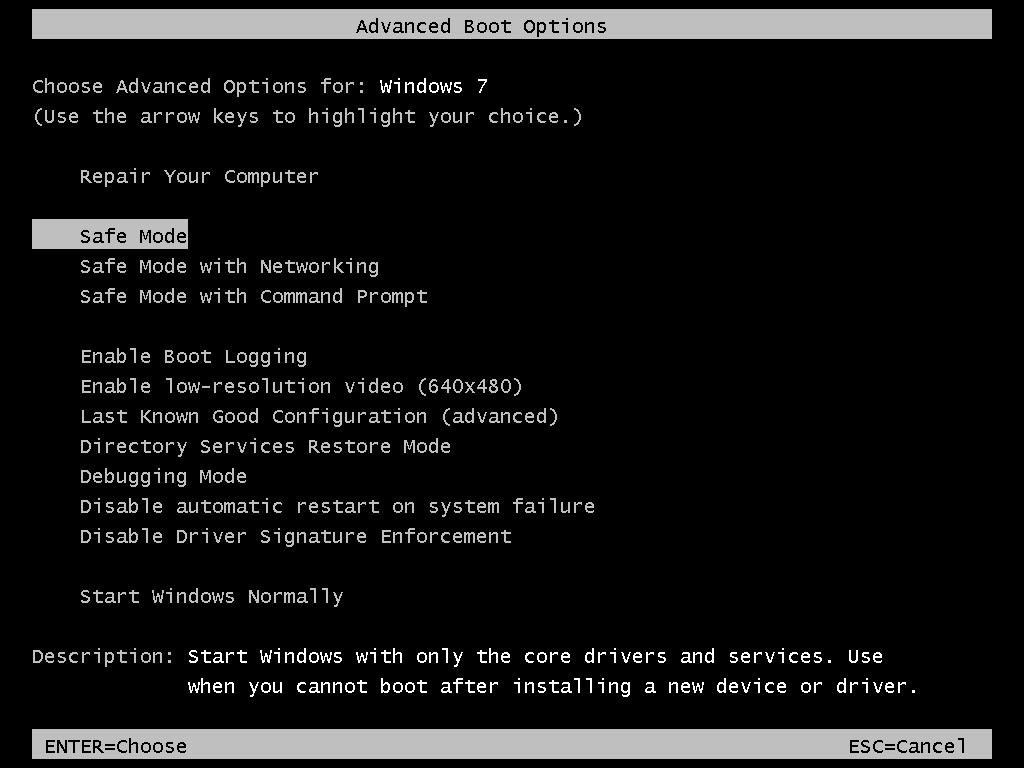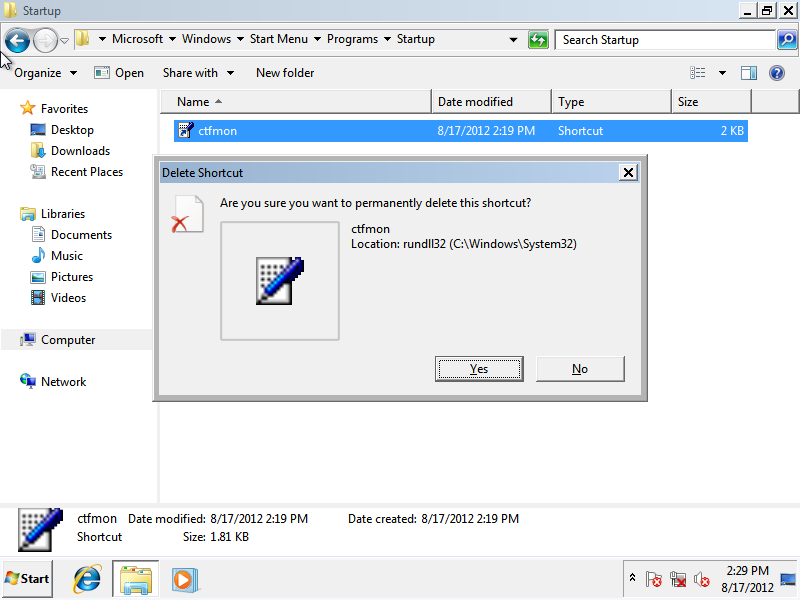Trojan:W32/Reveton
Summary
Trojan:W32/Reveton is a ransomware application. It fraudulently claims to be from a legitimate law enforcement authority and prevents users from accessing their infected machine, demanding that a 'fine' must be paid to restore normal access.
Removal
CAUTION Manual removal is a risky process; it is recommended only for advanced users. Otherwise, please seek professional technical assistance.
-
Boot the system into Safe Mode. To do so:
- First, restart the system (ClickStart, then Shut Down, select Restartin the drop-down dialog box that appears, then clickOK).
- As the computer restarts but before Windows launches, press F8.
-
Use the arrow keys to highlight 'Safe Mode' and
then press Enter.


Image 1 and 2: Enter 'Safe Mode'.
-
In Safe Mode, find the file ctfmon.lnk in the
Startup folder
(C:\Users\Username\AppData\Roaming\Microsoft\Windows\Start
Menu\Program\Startup\ctfmon.lnk) and delete it.

Image 3: Find and delete ctfmon.lnk from the Startup folder (click image to enlarge).
- Reboot the system again, this time into Normal mode.
- Finally, run a full computer scan with F-Secure Anti-Virus. to repair any remaining files
A False Positive is when a file is incorrectly detected as harmful, usually because its code or behavior resembles known harmful programs. A False Positive will usually be fixed in a subsequent database update without any action needed on your part. If you wish, you may also:
-
Check for the latest database updates
First check if your F-Secure security program is using the latest updates, then try scanning the file again.
-
Submit a sample
After checking, if you still believe the file is incorrectly detected, you can submit a sample of it for re-analysis.
Note: If the file was moved to quarantine, you need to collect the file from quarantine before you can submit it.
-
Exclude a file from further scanning
If you are certain that the file is safe and want to continue using it, you can exclude it from further scanning by the F-Secure security product.
Note: You need administrative rights to change the settings.
Technical Details
Trojan:W32/Reveton is a variant in a family of ransomware applications that have been targeting European users in the last few weeks.
After the trojan successfully infects a machine, it will prevent the user from accessing the Desktop and will display a fraudulent message alleging that the system was locked by a local law enforcement authority; the specific authority mentioned varies depending on the affected user's location, though most of the samples we have seen mainly mentioned various European authorities.
The general activities of this malware, including screenshots showing the warning messages displayed by the trojan, can be seen in our Labs Weblog post discussing this topic:
Installation
Upon execution, it will create the following file:
- On Windows XP: %USERPROFILE%\Start Menu\Programs\Startup\[reveton_filename].dll.lnk
- On Windows 7: %USERPROFILE%\AppData\Roaming\Microsoft\Windows\StartMenu\Programs\Startup\[reveton_filename]dll.lnk